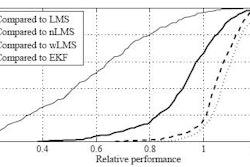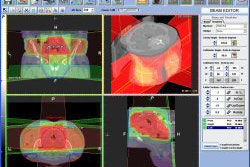HIV-positive patients are able to tolerate pelvic radiation therapy (RT) treatments for prostate cancer without excessive acute toxicity, according to findings of a seven-year study. While preliminary, these findings differ from earlier reports that HIV increases the risk of radiation toxicity in patients being treated for pelvic tumors, such as anal, cervical, or vulvar cancers.
The results were detailed in a poster presentation at the 50th annual meeting of the American Society for Therapeutic Radiology and Oncology (ASTRO) in Boston. The lead author of the study was Dr. Nicholas Sanfilippo, an assistant professor of radiation oncology at New York University Cancer Institute in New York City.
The records of all HIV-positive patients with prostate cancer treated between 2000 and 2008 at New York University Cancer Institute and St. Vincent's Comprehensive Cancer Center, also in New York City, were examined to determine if any patients experienced acute toxicity. Demographic and disease characteristics, RT treatment, and toxicity reactions were reviewed. The researchers discovered that toxicity reactions were low and did not necessitate an interruption in treatment.
The patients ranged in age from 49 to 82 years at the time of initial treatment, with a median age of 62. Median prostate-specific antigen (PSA) level was 6.5, with a range of 1.7 to 7.7. Eight patients had Gleason 6 tumors, seven had Gleason 7, two had Gleason 8, and one had Gleason 9.
Seven patients were at clinical stage T1c, one patient was at stage T2a, six patients were at stage T2b, three patients were at stage T2c, and one patient was at stage T3b.
A variety of therapies were utilized, as shown in the following table.
|
||||||||||||||||
| IMRT = intensity-modulated radiation therapy |
Acute grade 1-2 genitourinary toxicity was experienced by seven patients, and seven patients experienced acute grade 1-2 gastrointestinal toxicity. The researchers did not specify how many patients experienced both toxicities.
Because of the small size of the patient cohort, the authors recommend that cancer centers conduct similar retrospective studies to corroborate or dispute these findings.
By Cynthia Keen
AuntMinnie.com staff writer
October 29, 2008
Related Reading
Lung cancer particularly aggressive in patients with HIV, October 4, 2006
Colonic neoplasms more prevalent among HIV-infected individuals, August 24, 2006
Cancer incidence in HIV-infected women will likely increase, August 11, 2004
Copyright © 2008 AuntMinnie.com



















